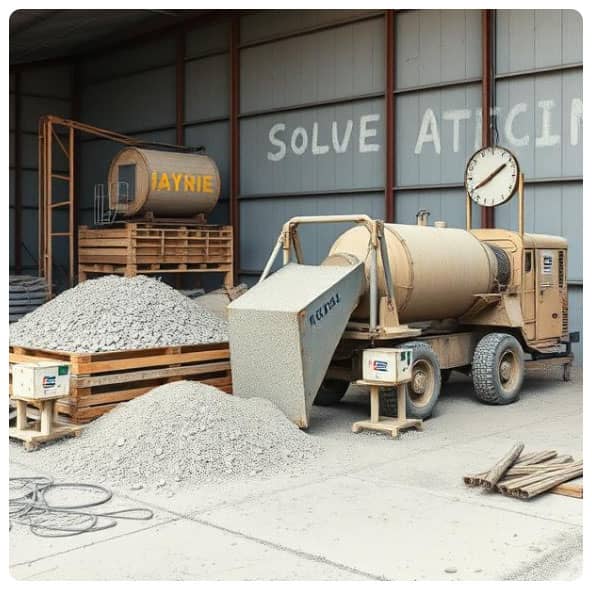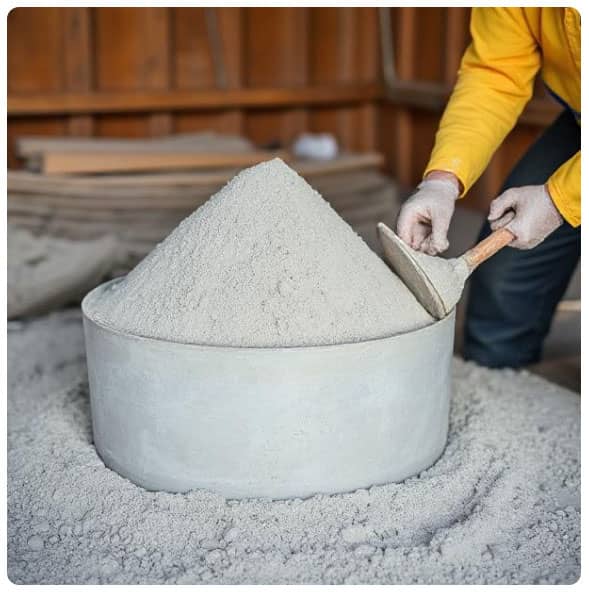Batching of Concrete and Its Methods

Concrete is the backbone of modern construction, and accurate batching of concrete plays a pivotal role in ensuring its strength, durability, and performance. In any concrete construction project, whether it's a high-rise building or a rural bridge, precise batching is critical for achieving uniformity and consistency in the final structure.
What is Batching of Concrete?
Batching of concrete refers to the process of measuring and combining the required quantities of materials such as cement, aggregates, water, and admixtures to prepare concrete. The primary objective of batching is to maintain uniformity and consistency in every batch of concrete mix.
Concrete ingredients must be accurately proportioned to match the mix design. A slight deviation can severely affect the concrete's workability, strength, and durability. Hence, proper batching techniques are essential for quality construction.
Types of Batching of Concrete
There are two primary methods of batching:
1. Volume Batching
Volume batching involves measuring the materials by their volume using boxes or containers. Though it's a simpler and more cost-effective method, it lacks the accuracy needed for large-scale or high-performance concrete structures.
Key Features of Volume Batching:
- Cement is measured in bags (1 bag - 35 liters or 0.035 m3)
- Aggregates and sand are measured in gauge boxes
- Water is added using volume measuring tanks
Drawbacks:
- Not suitable for large or high-precision structures
- Vulnerable to inconsistency due to moisture content and compaction of aggregates
- Leads to potential overuse or underuse of materials
2. Weigh Batching
Weigh batching is the process of measuring ingredients by weight, ensuring much higher precision. This method is universally accepted and used in RMC (Ready Mix Concrete) plants and large-scale projects.
Key Features of Weigh Batching:
- Ingredients are measured in kilograms or tons
- Uses digital or mechanical weighing systems
- Complies with standards like IS 4925:2004 for batching plants
Advantages:
- Greater accuracy and consistency
- Eliminates errors due to moisture or bulking
- Better suited for automated systems and RMC units

Manual vs. Automated Batching
Batching can also be categorized based on the method of operation:
Manual Batching
In manual batching, ingredients are measured and added manually. This method is labor-intensive and error-prone but still used in small construction projects.
Best Practices:
- Use calibrated containers
- Ensure consistent leveling of measuring boxes
- Regular supervision and quality checks
Semi-Automatic Batching
Here, some parts of the process (like water or admixture addition) are controlled mechanically, but human input is still required for measurement or loading of aggregates and cement.
Advantages:
- Reduces human error
- Increases batching speed
- Suitable for medium-scale projects
Fully Automatic Batching
Fully automatic systems control the entire batching process through PLC-based controls, sensors, and software. This is the most reliable, accurate, and efficient method used in RMC plants and high-end projects.
Benefits:
- Real-time data recording
- Consistent batching cycle times
- Integration with quality control systems
- Reduced manpower and operational cost
Components of a Batching Plant
A modern concrete batching plant consists of several integral components that work together to produce a uniform mix:
- Cement Silo: Stores bulk cement and feeds it via screw conveyor.
- Aggregate Bins: Separate bins for coarse and fine aggregates.
- Weighing Systems: Load cells and weigh hoppers for precise measurement.
- Water Tanks and Flow Meters: To accurately control the water-cement ratio.
- Control Panel: Central unit to operate and monitor all batching functions.
Factors Affecting Batching Accuracy
Several factors can influence the quality and consistency of a concrete batch:
- Moisture content in aggregates
- Temperature and humidity
- Calibration of measuring equipment
- Mixing time and sequence
- Maintenance of batching equipment
Mitigation Measures:
- Frequent calibration and testing
- Use of moisture sensors
- Regular cleaning and servicing of equipment
- Following standard operating procedures

Batching Tolerances and Standards
Concrete batching must adhere to standard tolerance limits to ensure the final mix meets design requirements. According to IS 456:2000 and IS 4926:2003, the following tolerances are recommended:
| Material | Tolerance (%) |
|---|---|
| Cement | ±1% |
| Aggregates | ±2% |
| Water | ±1% |
| Admixtures | ±3% |
Exceeding these tolerances can compromise concrete strength and durability, making regular calibration and checks non-negotiable.
Modern Trends in Batching
With advancements in construction technology, batching methods are also evolving. Some modern trends include:
1. Integration with IoT and Cloud Systems
IoT-based batching systems help in remote monitoring, real-time alerts, and cloud-based reporting. This enhances efficiency, traceability, and decision-making.
2. RFID-Based Inventory Control
This allows for automatic tracking of materials entering and exiting the plant, reducing human intervention and increasing transparency.
3. AI-Driven Mix Optimization
Artificial Intelligence algorithms are now being used to predict and optimize mix proportions based on historical data and environmental conditions.
Advantages of Proper Batching
- Enhanced structural strength
- Improved durability and service life
- Minimized material wastage
- Better workability and finish
- Cost efficiency through optimized material use
Common Mistakes in Concrete Batching
- Incorrect ratio of water to cement
- Inconsistent aggregate sizes or moisture content
- Lack of supervision during manual batching
- Ignoring calibration schedules
- Using non-standard equipment
Avoiding these mistakes ensures high-performance concrete that meets both structural and aesthetic expectations.
Conclusion
Concrete batching is the foundation of quality construction. Choosing the right method - be it volume, weigh, manual, or automated - is essential depending on the scale and precision required. By adopting advanced batching techniques and adhering to quality standards, we can significantly enhance the durability, performance, and economy of concrete structures.
Please watch the following short video for Batching of Concrete and Its Methods
